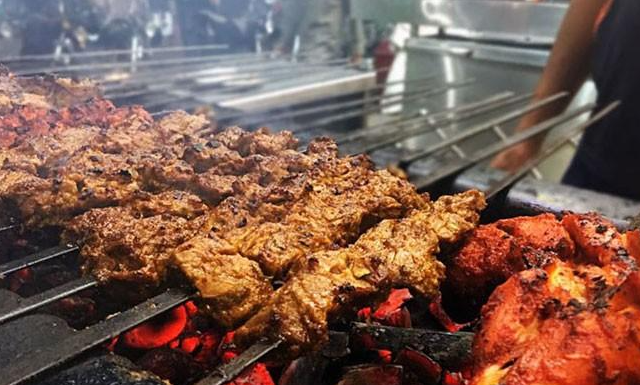
Sulieman Hedayat
As 2022 approached, people around the world cautiously celebrated the coming of the new year amidst the pandemic. In Afghanistan, the pandemic is no longer the primary concern , it is food or the lack of it to be precise.
Since 2014, emergency food aid has been the only source of food for over 5 million Afghans, and after the fall of the democratic government in early August, the situation has only deteriorated. In early 2021, Afghanistan was projected to be one of the hotspots of acute food insecurity by November.
This was before the Taliban takeover; unfortunately, their rule has only put further strain on the ordinary Afghans already living with meagre incomes and resources. According to the integrated Food Security Phase Classification (IPC), the economic collapse, conflict, and drought have put more than 6.8 million Afghans in Emergency or Phase 4 food insecurity level.
Below, we will be looking at the main drivers of food insecurity: Economic collapse, conflict, drought, which iss a brief outlook for the crisis unfolding in Afghanistan and how it will impact the region.
According to the integrated Food Security Phase Classification (IPC), the economic collapse, conflict, and drought have put more than 6.8 million Afghans in Emergency or Phase 4 food insecurity level.
The Taliban’s takeover of Afghanistan after the withdrawal of the United States (US) and international forces has pushed Afghanistan’s conflict into a new dynamic. Over 4 million internally displaced people—with a majority being women and children (in 2021)—are only going to increase, considering Taliban’s hardline rule and medieval governing practices. Concerning reports of retribution against the former government’s officials, especially those with the security forces; and revenge killings have caused displacements, with people choosing to cut all connections with their communities, fearing for their safety. Displacement, for millions, means losing their sources of income such as their agricultural land, jobs, and any support mechanism they had had in their communities.
The security situation coupled with natural constraints such as droughts have heavily affected food security in Afghanistan. Around 70 percent of Afghans are engaged in agriculture and 61 percent of Afghan households earn their livelihoods through it. However, the drought and a sharp decline in rainfall has adversely affected this industry. In the first half of 2021, The United Nation Children’s Fund (UNICEF) warned that the drought will put an additional 110,000 children at risk of being Severely Acutely Malnourished (SAM) or dying. Over a million children were already expected to be SAM by the end of 2021. This has added to the burden of displacement that is prevalent in the country as a result of the drought and conflict.
Displacement, for millions, means losing their sources of income such as their agricultural land, jobs, and any support mechanism they had had in their communities.
Afghanistan was already facing a dire economic outlook and a multitude of challenges even before the political turmoil and collapse of the government took place. The collapse has only exacerbated the situation to a crisis level, which many fear will turn into a humanitarian disaster if swift action is not taken. Since August, civil servants have not received their salaries. In addition, there is a growing concern for women who make up close to 22 percent of the labour force and 21 percent of civil servants. They are not allowed to show up for work, with many already replaced by male appointees. Women remain the most vulnerable, given the hardline stance of the Taliban on their education and employment.
The lack of available funds even in private financial institutions and the suspension of Central Bank assets worth over US $9 billion have resulted in a sharp depreciation of the Afghan currency (Afs). It dropped from 80 Afs per US Dollar to 110 Afs per US Dollar. Furthermore, food and other commodity prices have, at the least, doubled. With Afghans living on less than US $2, their buying power has considerably depreciated; for instance, the price for a 200g wheat bread, a mainstay of an Afghan family, has risen from 10 Afs to 20 Afs. With the international aid stopped, the situation has become bleaker given that Afghanistan has received over US $70 billion in aid since 2001.
With the Taliban’s unwillingness to comply with the demands of the international community to form an inclusive government, their current government is still largely unrecognised; and with no international aid, it will be millions of Afghans, in the coming months of harsh winter, who will bear the brunt of it. With families struggling to find money to sustain themselves, in desperation, parents have resorted to extremely horrific measures such as selling their own children. A recent report from a displaced people’s camp out in the western province of Herat stated that a family sold their 10-year-old daughter in an arranged marriage to a 21-year-old man for US $1,000 dollars (around 100,000 Afs). And in another province of Badghis, a man was looking to sell his eight-year-old son, just to get money to ensure the survival of the rest of his nine-member household.
With families struggling to find money to sustain themselves, in desperation, parents have resorted to extremely horrific measures such as selling their own children.
Dire poverty and critical food insecurity will also prove to be an obstacle for the neighboring countries and the region. Immigrations have already started to neighboring Iran and Pakistan. Given the economic challenges that both countries face amidst the pandemic, their response to the immigrations has been more deportations, long queues for visas outside the consulate offices, and in Iran’s case, even the borders were closed.
The COVID-19 pandemic, drought, and economic hardships combined with an uncertain future with the current rulers of Afghanistan, the Afghans are stuck between a rock and a hard place. The looming humanitarian crisis can happen any day, IPC might not call it famine, but when no one can afford any food—even if it remains available—it will result in scores of deaths, especially amongst women and children.
The post Food security in Afghanistan appeared first on The Frontier Post.








